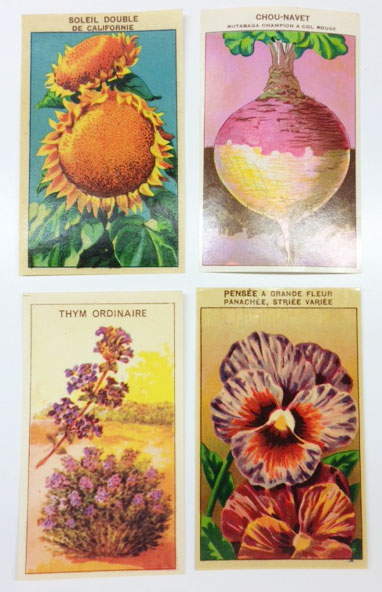A favorite winter pastime for gardeners is planning their next garden.
This is literally the "stuff that dreams are made of." What's the latest heuchera cultivar? Will nurseries have the rose that I saw at Chelsea last year? Any new tomatoes that aren't susceptible to verticillium wilt? Which annual will give my beds that extra pizzazz? Seed and nursery catalogs have been filling our mailboxes (physically and digitally) and put us on the road to planning our next garden.
In gardening like baseball, with spring comes a new planting season and hope springs eternal.
Early organized list of "flower-seeds"
History of seed and plant catalogs
Within the history of plant catalogs, the oldest surviving European plant catalog is the 1612 Florilegium by Emmanuel Sweerts, a Dutch merchant of bulbs, plants and other novelties from distant lands. A second Florilegium, the Hortus Floridus published by Crispijn van de Passe in 1614, this was designed as a marketing tool that salesmen could use to show what the plants would look like in bloom.
These nursery catalogs have been arriving in mailboxes since the 1830’s, almost 200 years ago. What began as not much more than organized lists, divided into categories by plant types such as vegetables, sweet and medicinal herbs, flowers, and bulbous roots have now grown into beautiful catalogs containing much more: prices, shipping and ordering information, illustrations, product descriptions, and growing instructions.
The oldest seed company in the United States is the D. Landreth Seed Company. Their founders introduced into the United States some of the most beloved flowers and vegetables known today including the Zinnia, the white potato, various tomatoes, and our own Bloomsdale Spinach.
In America, many more seed and nursery companies came into being during the second half of the nineteenth century, especially after the Civil War. Mail-order became much more common due to improved transportation networks and postal reforms in the 1860s that made it cheaper to ship seeds and plant material, as well as catalogs.
Perhaps the most beautiful catalogs date from 1890’s to the 1930’s, directly attributable to advancements in printing. They are works of art, historical documents of the seed business and an agricultural history of the United States, U.K. and several other countries. They provide a scientific history of botany, plant research, the introduction of plant varieties; and a social history of popular culture. The catalogs and seed packets offer a narrative on the graphic arts and advertising.
As a garden designer in Manhattan, my own interest in these seed packets has cultivated (excuse the pun) a small collection.
If you enjoyed this post, why not share with a friend. Thank you!














